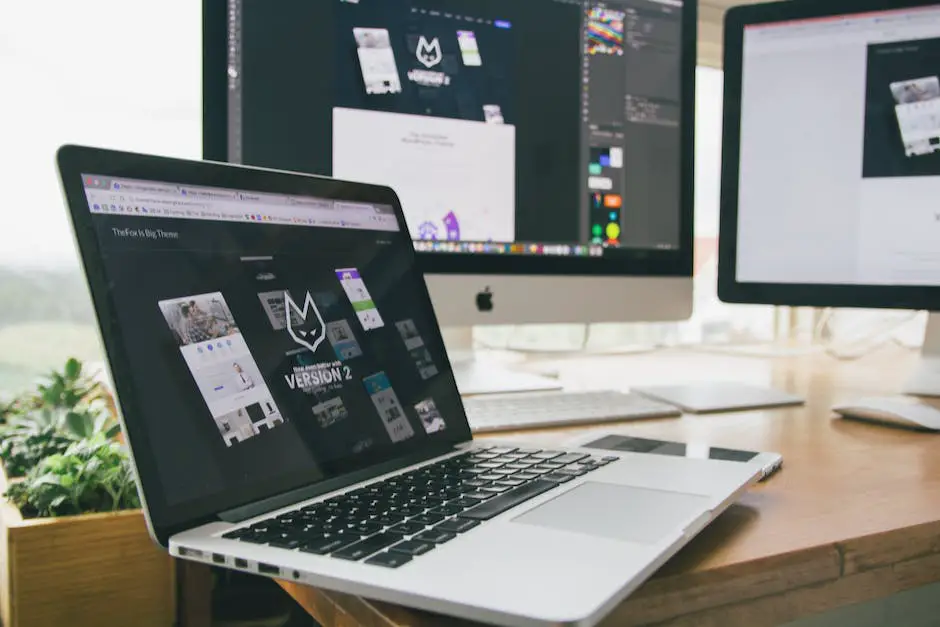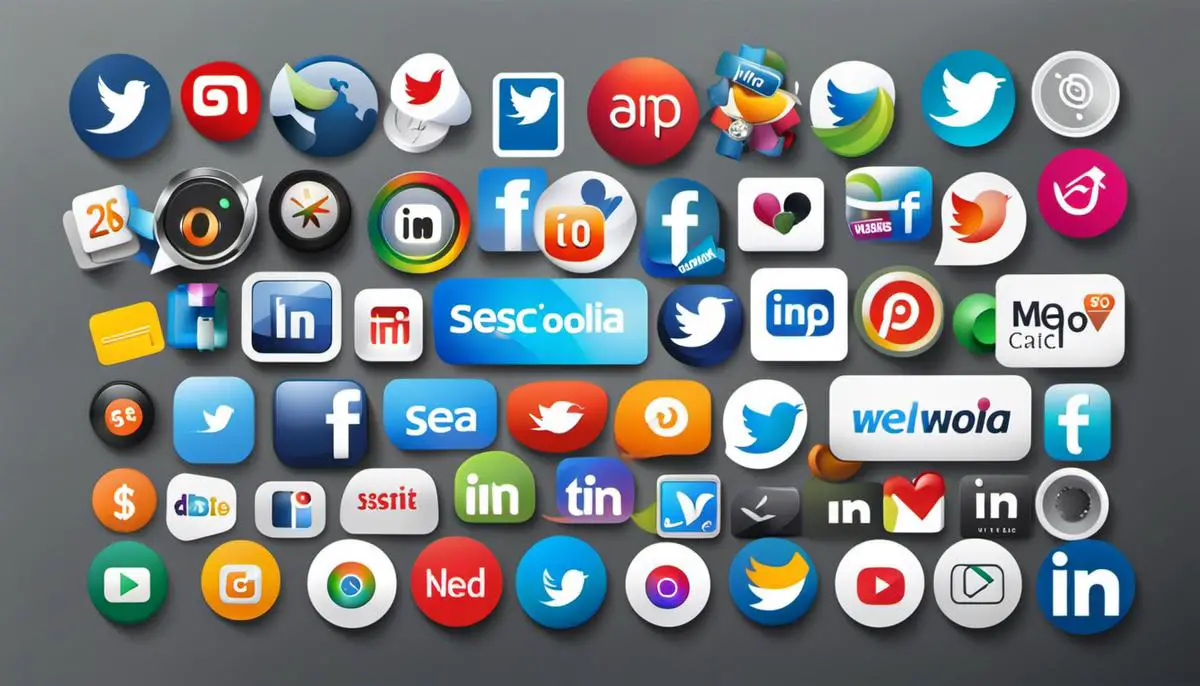In an expansive digital era where social connectivity orbits at the heart of most online interactions, integrating social media buttons into your website design can offer unprecedented benefits. The intricate entwinement of social media and website traffic isn’t just relevant, but crucial to optimize user engagement, SEO, and conversion rates. Each platform offers unique potential to bolster your website’s appeal and reach. Decoding this process requires a solid understanding of HTML and a careful approach to web design. Ensuring the social media buttons are well-positioned and aesthetically designed can significantly improve the user experience. Over the course of this reading, we’ll delve into diverse methods of adding these vital virtual ties – through plugins, widgets, or direct manual coding, each with its challenges and benefits.
Understanding Social Media Integration
Understanding Social Media Integration
Social media integration is becoming increasingly important for businesses, given the high volumes of users on these platforms. Essentially, it means the use of social media buttons or widgets on your website, allowing visitors to interact with your content on different social media platforms directly. Facebook, Twitter, Instagram, LinkedIn, and Pinterest are among the key platforms.
Relevance and Benefits of Social Media Buttons
The primary benefit of social media buttons on your website is it helps to increase the visibility of your content. By adding these buttons, users can share your content on their social media profiles, offering direct exposure to their followers. This also potentially creates user-generated content, which further adds to your social reach and user interaction.
Social media integration also enables better user engagement. Users might not necessarily want to leave your website to connect with you on social media. By integrating these buttons, you’re simplifying the process, allowing them to engage with your business while still on your webpage.
Impact on SEO and Web Traffic
Social media buttons have a significant impact on SEO. Indeed, while they don’t have a direct effect on search rankings, they play a crucial role in indirect ways. When users share your content on their social media, it naturally garners more clicks and visits to your website, boosting your organic traffic numbers. Google and other search engines detect this traffic, which can improve the ranking of your website.
Aside from increasing web traffic, these social media buttons make your content more trust-worthy to search engines. A piece of content that is widely shared comes across as informative and relevant, thus improving its ranking potential.
Improving Conversion Rates
Social media buttons can help with conversion rates. As user engagements through likes, shares and comments increase, trust in your business also increases. This helps nurture prospects through the sales funnel, leading to a higher conversion rate over time.
Identifying the Right Social Media Platforms
The choice of social media platform depends largely on the nature of your business. B2B companies, for instance, may find LinkedIn the most useful for reaching professionals, while visually-oriented businesses might benefit from Pinterest or Instagram. Facebook and Twitter are generally beneficial due to their massive user bases. Understanding your target audience and the nature of your content should guide your decision on which platforms to prioritize.

Diving Into HTML and Website Design
Understanding HTML and Website Design
HTML, or Hyper Text Markup Language, is the standard language used to create websites. Familiarizing yourself with HTML can significantly enhance your ability to customize your website’s design. Basic HTML coding involves the usage of tags, which are used to define elements within the page. For instance, the ‘
‘ tag represents a paragraph, while the ‘‘ tag is used for hyperlinks.
To edit your website’s HTML safely, it is recommended to backup your current code. This way, if any error occurs, you can revert back to the initial state. You can directly access your HTML code by right clicking on your webpage and selecting the ‘Inspect’ or ‘Inspect Element’ option.
Adding Social Media Buttons
After understanding HTML, you can begin to integrate social media buttons into your website. There are two main methods to do this: using HTML or using a plugin.
To use HTML, first, you need to choose the social media icons you want to add to your website. You can find a variety of free icon libraries online, such as Font Awesome. Once you have selected your icon, simply add the following HTML code to your website, replacing ‘Your Link’ with the URL to your social media page.
On the other hand, plugins offer a user-friendly way to add social media buttons. Popular plugins for WordPress websites, for example, include ‘Simple Share Buttons Adder’ and ‘AddToAny Share Buttons’. Once installed, these plugins have customizable settings that allow you to easily select which social media buttons to display, and how they should look.
Designing Your Social Media Buttons
The placement and design of your social media buttons have a significant impact on user experience. Ideally, they should be placed in a location that is easy to find but not obtrusive. This could be in the sidebar, header, or footer of your page.
Furthermore, the design of the buttons should align with your overall website aesthetic. The colors, shape, and size should be consistent with your branding.
Creating a Seamless User Experience
A seamless user experience is paramount to keeping your visitors engaged. This involves ensuring the social media buttons do not interfere with the readability and usability of your website. For example, they should not cover any important information or be confusing to users. To test this, you can ask a few people to navigate through your website and request their feedback on their experience.

Technical Application
Choosing a Method for Adding Social Media Buttons
There are different methods to add social media buttons to your website; you can use plugins, widgets or manual coding. Various plugins and widgets are available that can do the job for you, saving your time and effort. Manual coding on the other hand gives you more control and customization options.
Plugins and Widgets
Plugins and widgets for commonly used content management systems like WordPress make it extremely easy to add social media buttons to your website. A very popular social media plugin is “Easy Social Share Buttons for WordPress”. With this plugin, you can easily add a variety of customizable buttons to your site.
To add a plugin, simply go to the ‘Plugins’ tab in your website’s dashboard, click on ‘Add New’, search for ‘social media buttons’, and install and activate the plugin of your choice. Once the plugin has been activated, you can customize the look and placement of your buttons through the plugin’s settings.
Similarly, you can add widgets to your site. These are normally placed in the footer or sidebar of your website. By dragging and dropping the widget into one of your website’s widget areas in ‘Appearance’ -> ‘Widgets’, you can add social buttons.
Manual Coding
If you have a basic understanding of HTML and CSS, you can manually add social media buttons to your website. This could involve using the official branding and hyperlinking it to your social media page, or coding a button from scratch. You have complete control over the design and placement of your buttons with this method.
Customizing your Social Media Buttons
No matter which method you chose for adding the buttons, it is important to customize them to suit your website’s design and aesthetics. This may involve changing the size, color, and design of the buttons to align with your brand.
Troubleshooting Common Issues
You may face issues like buttons not appearing, not working properly or not matching with your website’s color scheme. For plugin and widget related issues, check whether it’s updated to the latest version and its compatibility with your website platform. For manual coding issues, check your code for any errors or missing elements.
Testing Functionality
Once installed, it is important to test the functionality of your social media buttons across multiple browsers and devices to ensure they’re working properly and are easily accessible to all users.
Measuring Performance Using Analytics
Lastly, track the performance of your social media buttons using analytics. Tools like Google Analytics can help you understand how users are engaging with your social media buttons. This will provide valuable insight into which buttons are being clicked the most and can inform future decisions about placement and selection of social media buttons.

It’s clear, then, that ingeniously integrated social media buttons have the potential to revolutionize your website. They serve as direct channels to amplify your online presence, driving user engagement and traffic, while positively impacting SEO. Though the process of adding these buttons to your website might seem complex, the payoff in gaining a larger audience and superior website statistics is well worth it. A perfect blend of technical knowledge and creative execution can transform your website into a vibrant, interactive platform. Finally, monitoring the performance of your buttons through analytic tools not only helps quantify their impact but also paves the way for crucial future changes and improvements.
